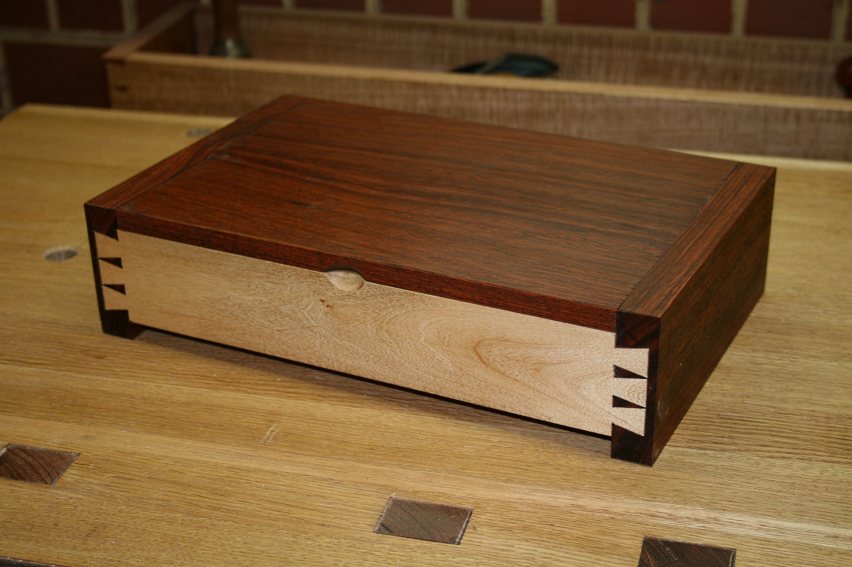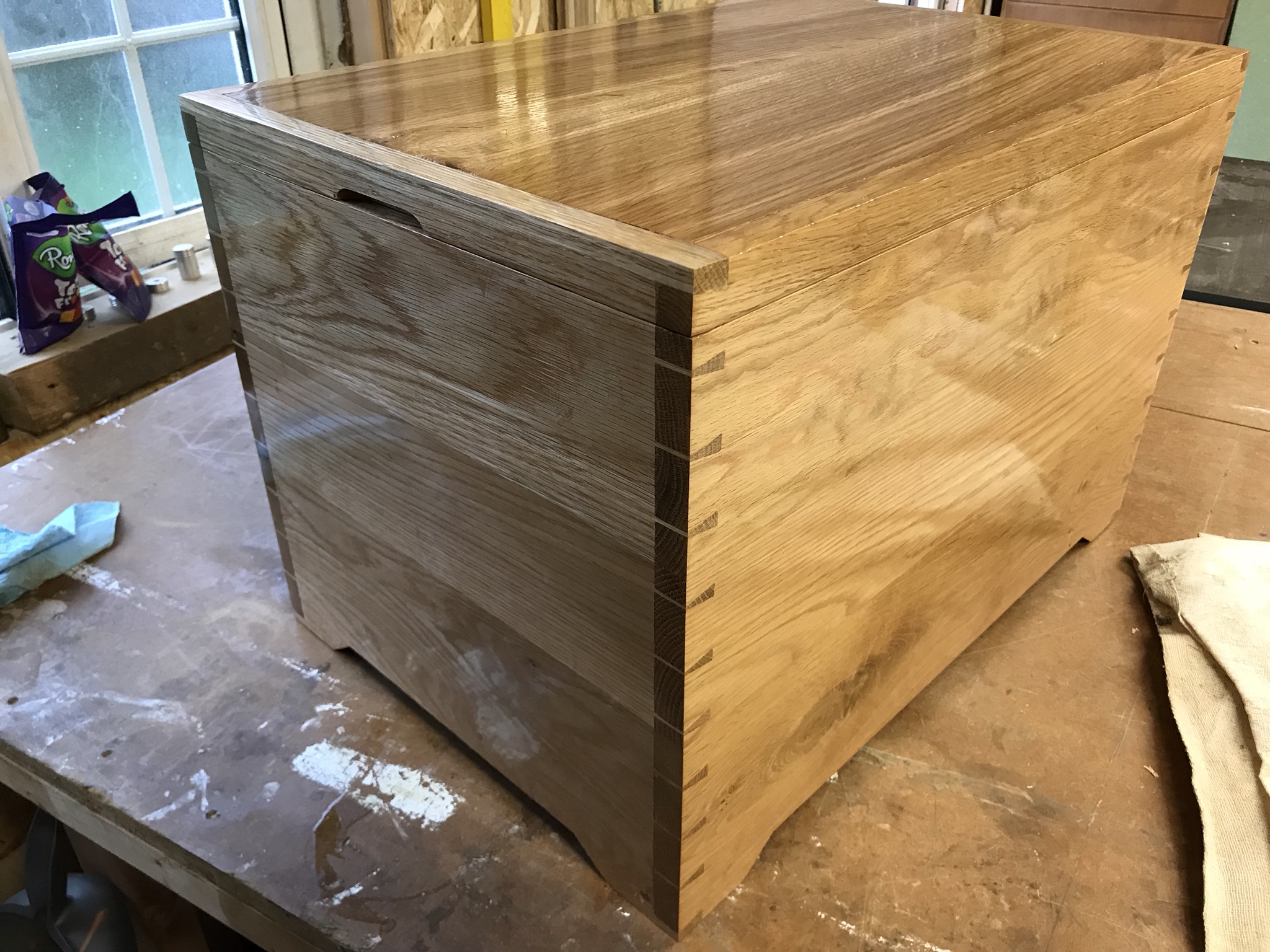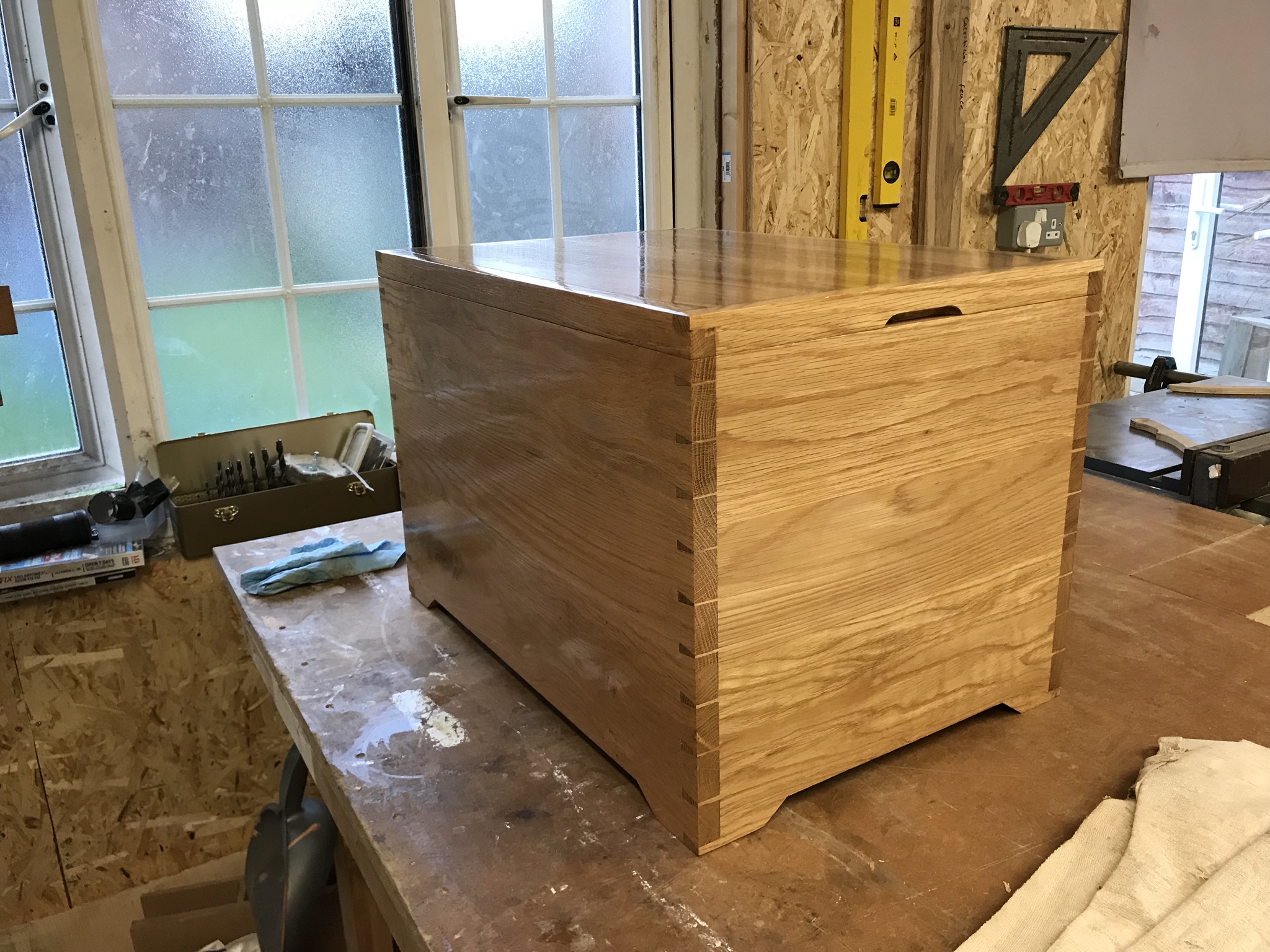When making a dovetail box 200mm x 125mm x 100mm (lxwxh), which board should be to the front, tail or pin board. I have made both, they all look ok to me. So what would be the more traditional look.
thanks,
Jestyn
thanks,
Jestyn










Pins are pointy, and should point in the direction you'll be pulling them.Clockie":1wmy4euk said:When making a dovetail box, which board should be to the front, tail or pin board.
Not really - traditionally you get every variation possible!AndyT":1v9ut9ab said:....... It's trad/normal to have all the tails complete and symmetrical, with half pins at the top and bottom of the box sides. .....

I was always taught to make the half pin at the top and bottom of a box/drawer half the thickness of the timber plus a smidge; so if say it was a box with 10mm thick sides the 'half-pin' would be 6 or even 7mm, but you're correct Jacob, there is no rule set in stone - RobJacob":wxavuu05 said:"Half pins" is misleading and many modern makers make the mistake of reading that literally and do very slender and fragile half pins, top and bottom.
Traditionally they are usually much bigger, but there isn't a rule.


Enter your email address to join: